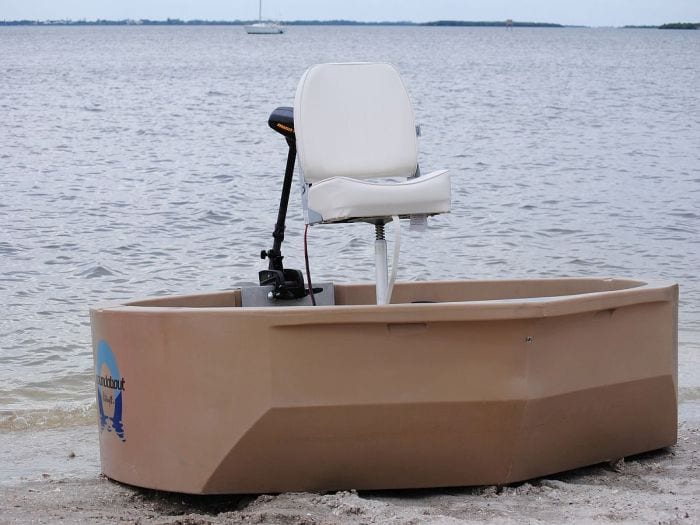
What’s in a hull? Sure, we all know the bigger powerboats are mostly either fiberglass or aluminum, but what else? Well, with smaller types of watercraft come several different types of material for the hulls. These range from different types of plastics to fiberglass to wood to carbon fiber to Kevlar and beyond. All these materials have their pros and cons, but some are more popular than others. HDPE (high-density polyethylene) and LDPE (low-density polyethylene) and fiberglass are probably the most widely used materials when it comes to small watercrafts. What I mean by small watercrafts are kayaks, paddleboards, small jon type boats and Roundabout Watercrafts.
HDPE and LDPE are becoming the go-to material when it comes to kayak manufacturing for several reasons. It is also the same material (LDPE) that Roundabout Watercraft uses for their hulls. Although very closely related, HDPE and LDPE do have slight differences. HDPE is the high-density version of the polymer polyethylene. In HDPE, the molecules pack more closely together resulting in a higher density polymer. This allows the plastic to become more dense and rigid than its LDPE counterpart.
LDPE on the other hand in less dense, but offers more give allowing the material to be able to flex under pressure as opposed to cracking. This is great for instances where you’re bumping into rocks or oyster bars when exploring your favorite body of water. LDPE can also be a bit lighter in weight making it easier to maneuver and transport. In the rare occurrence of damage, have no fear as the polymers are easily fused back together with a little heat. The process known as plastic welding is a simple and easy process used to repair everything from small cracks to large, gaping holes. Even though HDPE and LDPE are two different forms of polyethylene, they are both hugely versatile and useful polymers!
The other materials mentioned earlier offer up different advantages and disadvantages when compared to the polyethylene hulls. The fiberglass material is much lighter in weight but do not have the durability offered by the polyethylene hulls. These watercrafts much be handled with much more care when maneuvering in and around objects such as rocks and oyster bars. Also, if damaged, fiberglass is much tougher to repair compared to the plastics. This goes for most all the other materials outside of the plastics.
As you can see, it’s no wonder that Roundabout Watercrafts chose the polyethylene route when choosing material to build their hulls from. Not only is the LDPE durable and easily repairable in the unlikely event of damage, but it also helps keep the cost down compared to more damage prone fiberglass or other materials. All this combined gives the consumer peace of mind when making the decision to purchase a quality Roundabout Watercraft.

